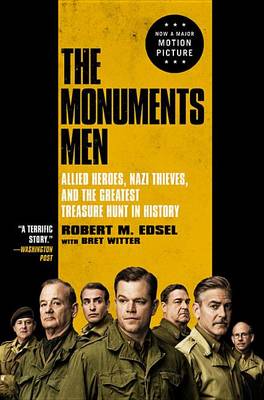
Amber (The Literary Phoenix)
Written on Oct 28, 2017
Hitler is claiming the great works of history.
As World War II booms, mens lives are ripped away and the world hangs on the edge, wondering if the world of Nazism has yet been destroyed. One of the most notorious aspects of the German Reicht has been its dissolution of cultures - most famously and horrifyingly seen in its "death camps". As terrible and tragic and unforgivable as this is, there is another aspect of culture that the Germans are gobbling up: art. The great works of the masters are being torn from walls, brought to the Reicht headquarters. Sometimes, they're destroyed.
The job of the monuments men is to get to the art before the Germans do, protect it, and reclaim what has been stolen.
It's an interesting story.
This book has been on my TBR since the film came out a few years ago. While I don't typically go chasing stories of World War II (it breaks my heart, really) I do find it fascinating to see how Europe was nearly overrun by a madman. It makes me fear for the choices that could be made by unstable leaders in today's day and age. While the theme of the film and the book are similar ' save the art! - the characters and story are not. We meet the real men who served in the Monuments Men. Each was assigned to a different division and managed a different part of the map. Each was left without supplies and vehicles to complete their task. In the beginning, many were alone. It was a gruesome task.
I also believe it must have been a difficult one to argue. I cannot image a world without the richness of our modern museums. One without Michelangelo or the collections in the Louvre. In the same breath, the supplies that could have gone into the cultural rescue mission also needed to go to the soldiers - to save lives. And yet, the men who saved the art in many ways contributed to the preservation of Europe's soul, which is also supremely important.
This book was incredibly scattered.
I suppose it's a personal preference, but I like my history to be as linear as possible. Especially when a story is being told in so constrained a timeline as a couple years, and entirely in the same part of the world. Every time Edsel wanted to switch to another of the Monuments Men and speak in his perspective for a while, we went back to the beginning. What was this man's history - what were his contributions that led to his placement in this corps? We would learn tidbits about a man's contributions just to hear them retold again from his own point of view. There were many times as I was listening I needed to check and be sure I hadn't accidentally skipped backwards, because I heard all this before.
An interesting history, but not the best read.
The background of the chase after the Ghent altarpiece and Michelangelo's Madonna are fascinating, but we spent much less time looking at the historical artifacts than we spent hearing about the various letters these men would send home. Having finished this book, I feel like I have a greater sense of one man's pride at being assigned to Patton's Third than I do about the art itself. And that was a bit disappointing.
This book is best served for those interested in World War II than in the art side of it. I believe it may have been a clearer read if I had gone with hardcopy instead of an audiobook, as it jumped around a lot.

